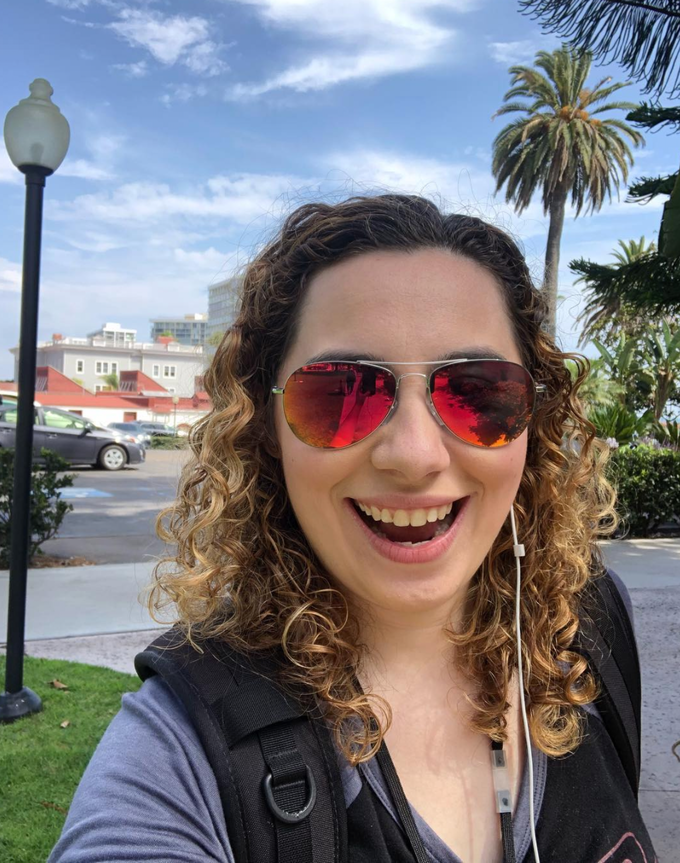There are big comic book events, then there's Batman: No Man's Land - a retrospective
A retrospective of the seminal 1999 crossover event Batman: No Man's Land

The 'No Man's Land' crossover shook up the entire Batman line, as well as the larger DC universe at that time in 1999. The 84-part (!!) crossover involved the entire Bat-family, as well as their villains, as the dealt with the fall of Gotham City - literally - with a natural disaster and the world abandoning them in the aftermath as they attempt to rebuild.
To this day, many yearly crossover events at DC and Marvel are compared to it in scope and their potential long-lasting effects after its completion - including the current Dark Nights: Death Metal series.
So how did this 86-part crossover that dominated comic bookshelves in 1999 come to be? It all started with then-DC associate editor Jordan B. Gorfinkel.
Land of opportunity
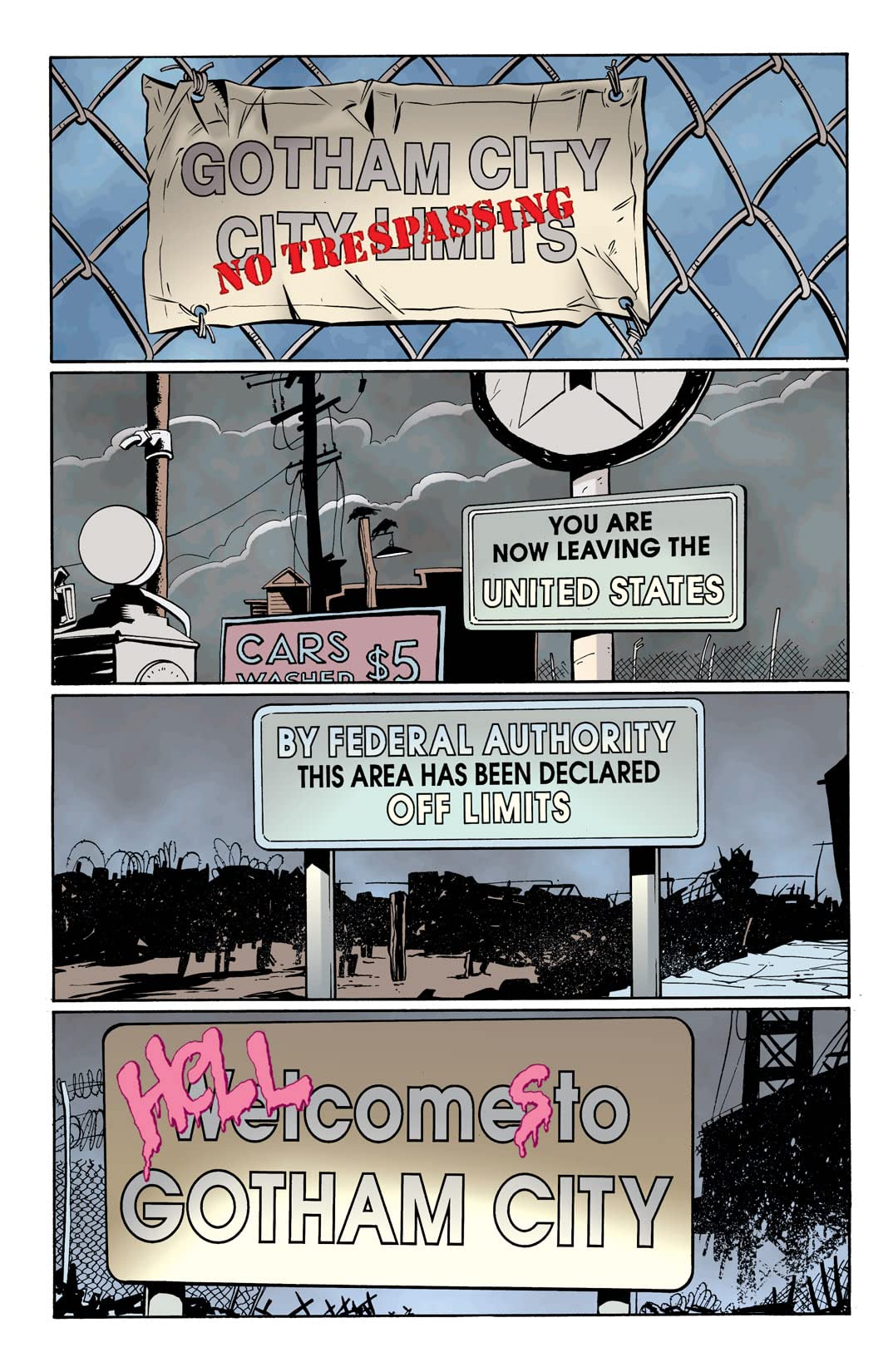
"I was languishing in the associate editor, a staging ground between assistant and editor. There was a Catch-22 preventing my advancement. In order to be a full editor, I had to create something editorially," Gorfinkel tells Newsarama. "But in order to create something editorially, I needed to be a full editor.
"At the conclusion of Shabbat, the Jewish Sabbath that ends at sunset on Saturday night, I sat down at my desktop computer and started typing," he continues. "At dawn, I stopped, attached the resulting text file to an email addressed to [then-Batman group editor] Denny O'Neil and hit send. I went on vacation and, sated by the catharsis of creating, promptly forgot about it."
He might've forgotten about it, but Denny O'Neil didn't - and neither did the top brass at DC.
"On my first day back from vacation, I made my way into Denny's office to clean his inbox—and the prior week's take-out boxes. I asked the Sensei what was up," Gorfinkel explains. "'The proposal you sent me last week? I sent it up the chain. It's approved. We're doing your storyline.' An entire year of Batman. Out of my head. Into the books. Yow…"
Get the best comic news, insights, opinions, analysis and more!
The event to be named 'No Man's Land' was approved; now all that was to be done is set the stage. With the recent expansion to the Bat line and the anniversary of Batman's 'Year One' arc around the corner, this sparked the idea of creating something epic.
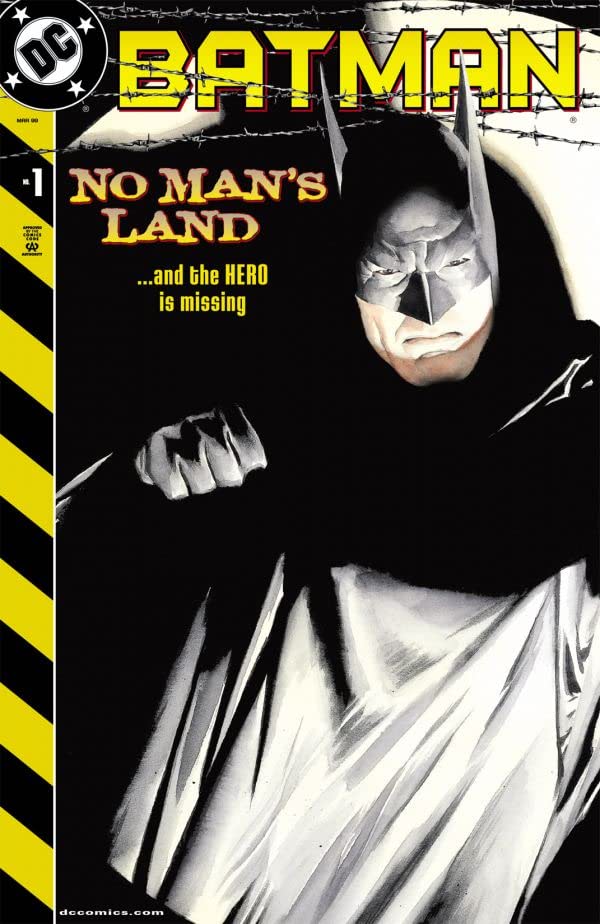
"What if we were to mark these occasions with a showstopper that capped a decade of Denny's Dark Knight by deconstructing all that continuity, and reconstructing the mythos on an even stronger foundation for future generations of storytellers and fans?" Gorfinkel says. "
"By deconstructing... I mean literally blowing it up, starting with the bridges that connected Gotham to mainland USA," he "continues. "Taking away everything Batman had built in his career. Forcing him to return to his roots as a lone vigilante, bereft of his technical and emotional support system, from the Batcave to the Batfamily.
"In the process of rebuilding, the character would learn to value his adopted family, which he'd kept at arm's length emotionally till that point. And moving forward editorially, we'd be giving the franchise license to have a fresh start, free of prior continuity if so wished."
Creating comic like a novel
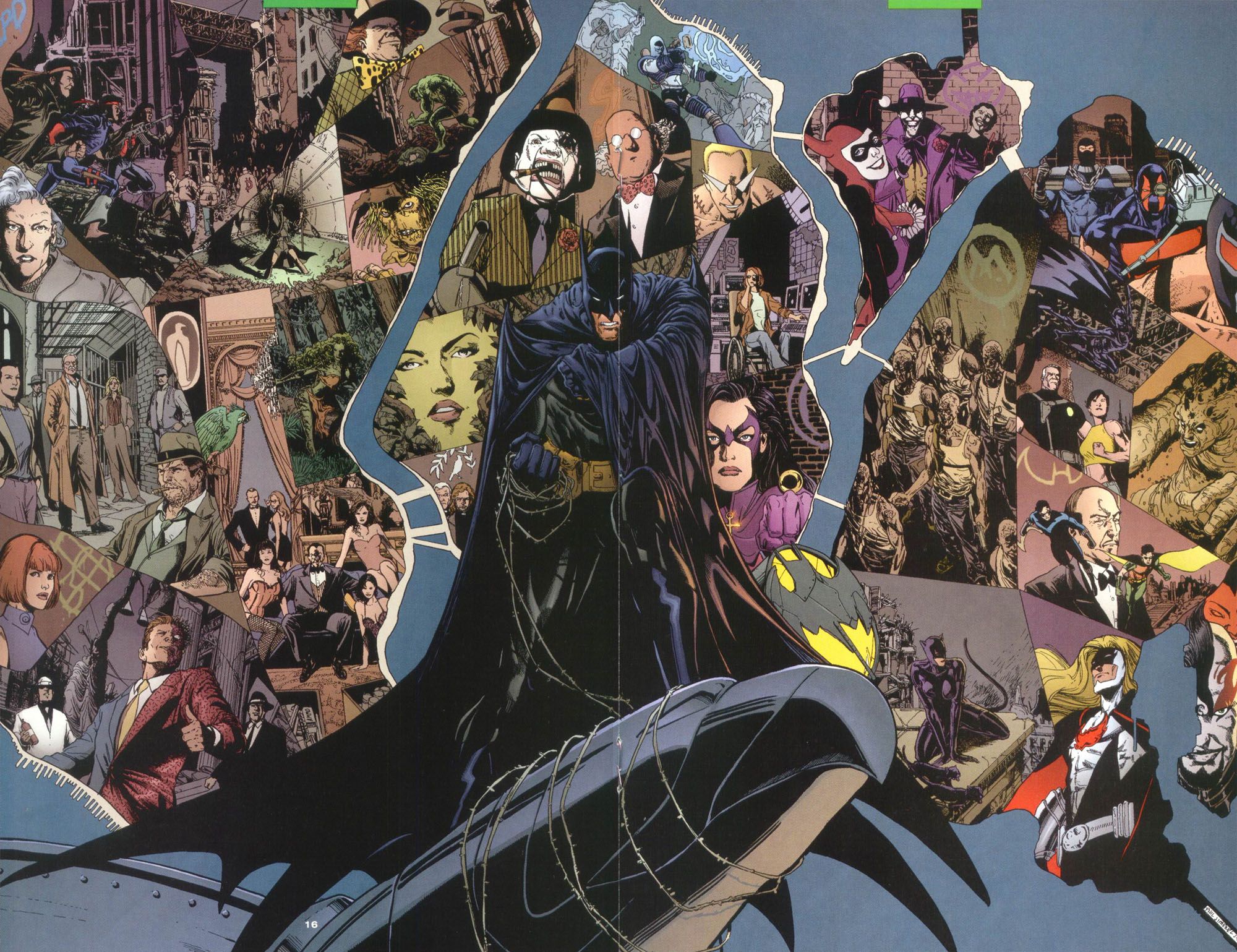
Inspired by the syndicated TV series Babylon 5 and creator J. Michael Straczynski's intention to tell a serialized story like a novel, Gorfinkel wanted 'No Man's Land' to "play the long game" even if comics, or for Babylon 5, TV, wouldn't normally at the time.
"I was captivated. I realized why: because there were stakes. Anything could and did, happen to any character. Main characters could die, and stay dead, because he'd planned how everything would end," Gorfinkel said of JMS's Babylon 5. "If everything was ending, nothing and no one was sacred. What if we could do that in Batman—inject stakes so that we really care about the characters because everything that happens matters? Not just to the heroes; to the villains, too."
At the same time Gorfinkel was working in DC's Bat-offices under then-group editor Denny O'Neil, so was Heavy Metal's executive editor Joseph Illidge - then an assistant editor like Gorfinkel, having just come over from Milestone Media.
"For me, the idea of a year-long story that separated Gotham City from the rest of the world (and overall from the DC superhero activities of the Justice League) and told a tragic drama about the rise and fall of a society, relationships, and the power of myth was the most compelling narrative I encountered in my career since the birth of the Milestone comic book universe," Illidge says.
The war room

In addition to the then expanding Bat-family line of titles, 'No Man's Land' crossed over into other titles outside of Gotham like Young Justice and Justice League.
"[The non-Bat titles tying in] were all contextual to the larger story in ways that showed how closing off Gotham City from the rest of the DC Universe has ripple effects in both small and profound ways," explains Illidge.
Now, of course, an event that spanned into so many titles came with its fair share of obstacles given the 80+ issues it encompassed across 14 titles.
"It was certainly a challenge to manage it all on a daily basis. My office became the 'war room' in which the chart with all the issues from a bird's eye view was located. "Illidge explains. "So every day new materials came in, books went from being in the red to the black to the green. Red was an indicator of danger status, due to the chaotic nature of making comic books, black meant the book was in good shape, and green meant the book was in flight to the production department."
There's big events, then there's 'No Man's Land'
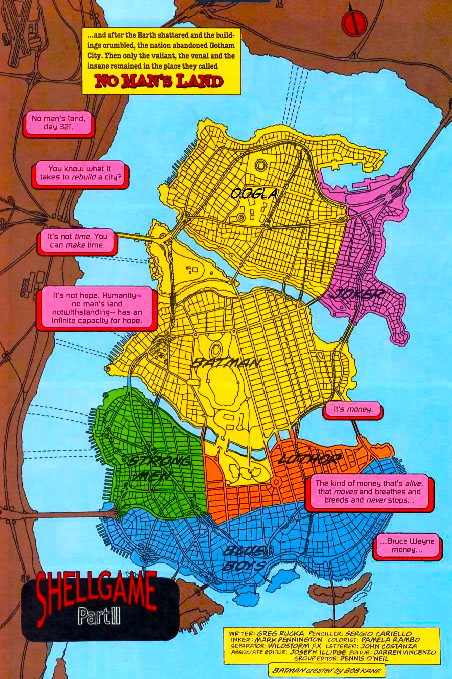
A familiar face in the Bat-titles at the time, writer Devin Grayson, wrote tie-in stories in four different DC titles for 'No Man's Land' and frames that event as above and beyond any other event before, or sense.
"I want to make a distinction here between a big event and that big event," says Grayson. "In general, it's not a great idea to pull writers off of stories well-suited to their particular talents and interests to have them all work together on a single narrative, and often it's no fun at all. But 'No Man's Land' genuinely was, for several reasons: it was the first such event of that length and size attempted by the people involved, we all respected each other's work and enjoyed one another's company, it was a great, new idea, and it was led by Denny O'Neil."
By that time, O'Neil had been Batman's group editor for over a decade - and his mark on the character as a writer went back to the '70s to include the co-creation of Ra's Al Ghul, Leslie Thompkins, as well as the revival of both Joker and Two-Face.
"Though there were many genuinely talented and brilliant people working on that project, it was Denny's trust, ingenuity, and largesse that inspired all of us to work together with such commitment and cooperation," Grayson says. "The event was orchestrated rather than dictated, and what I felt more than anything was lucky to be on that team under that leadership. That Bat-office—Denny O'Neil, Scott Peterson, Darren Vincenzo, Jordan Gorfinkel, and later Joe Illidge—was very special. I've spent my entire career in comics feeling grateful to and for them."

This expansive event led to DC organizing one of the first organized summits for writers to plan out big stories in the same room at DC's storied offices at 1600 Broadway in Manhattan.
"One of the things I love about working in comics is how collaborative the process can be, and 'No Man's Land' represents one of the most extreme and also successful versions of that," says Grayson. "We started with a 'Bat-summit,' in New York, with the editors and many of the key creators meeting in the DC offices to plot the story out together on a giant whiteboard so that we all knew where we and one another were heading before a single word was written, and then there was a master document which was updated and recirculated regularly. At some point, we all went our separate ways and worked independently, but the cohesion of the story depended on a great deal of communication."
"I don't know if 'pride' is the right word, but thinking back on the collaborative aspect of it always warms me," she continues. "It's easy to imagine a project like 'No Man's Land' dissolving into dictated typing-monkey-syndrome or egotistical bickering, but owing in large part to how carefully a culture of respect and creative generosity had been nurtured by that particular editorial team, we were all primed to pull together to create something we were genuinely excited about and proud of."
Aftermath

Could a crossover event of that scope be accomplished successfully 20+ years later? Grayson doesn't think so.
"I mean….no. None of the people who made it work are there anymore and I honestly don't think it would be possible to pull off in the current corporate culture over there," Grayson says.
"It's great to have the event remembered and rediscovered, and wonderful to inspire people, but I'd hate to think of new creators being asked to retread it - they should be freed to channel their energies into creating something new," she continues. "Part of what was so exciting about it was its originality. And that's what we need more of."
Kat has been working in the comic book industry as a critic for over a decade with her YouTube channel, Comic Uno. She’s been writing for Newsarama since 2017 and also currently writes for DC Comics’ DC Universe - bylines include IGN, Fandom, and TV Guide. She writes her own comics with her titles Like Father, Like Daughter and They Call Her…The Dancer. Calamia has a Bachelor’s degree in Communications and minor in Journalism through Marymount Manhattan and a MFA in Writing and Producing Television from LIU Brooklyn.
